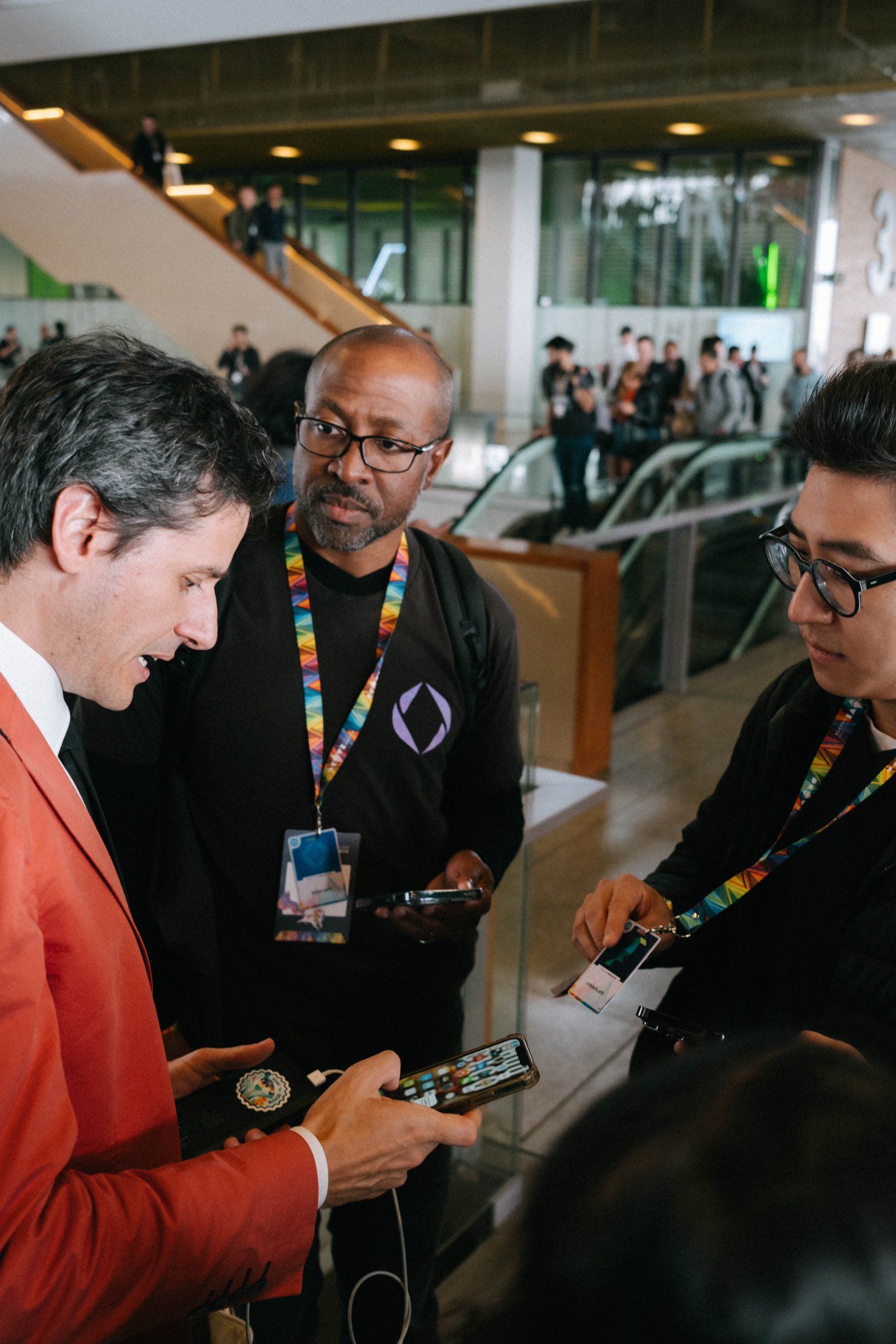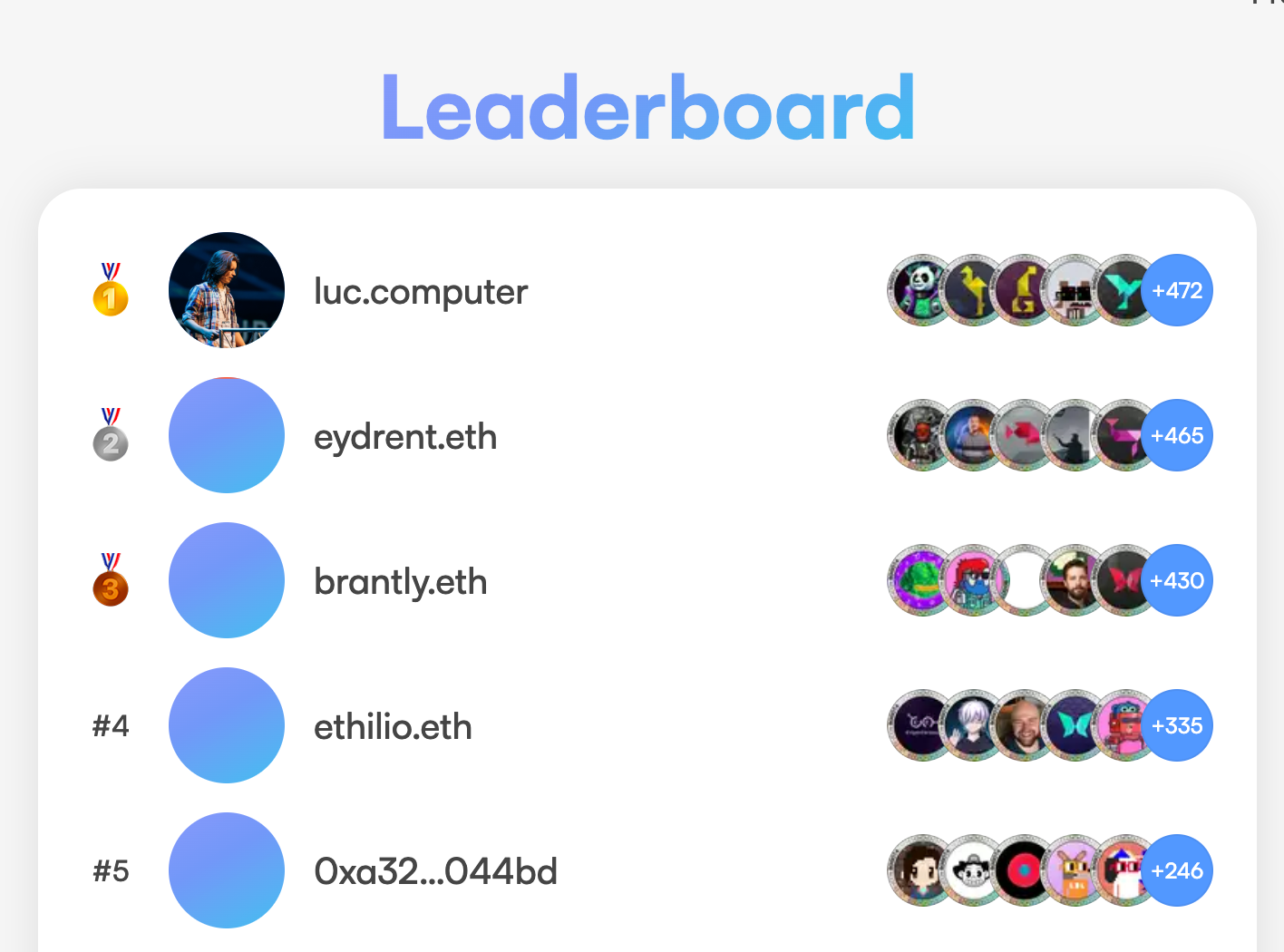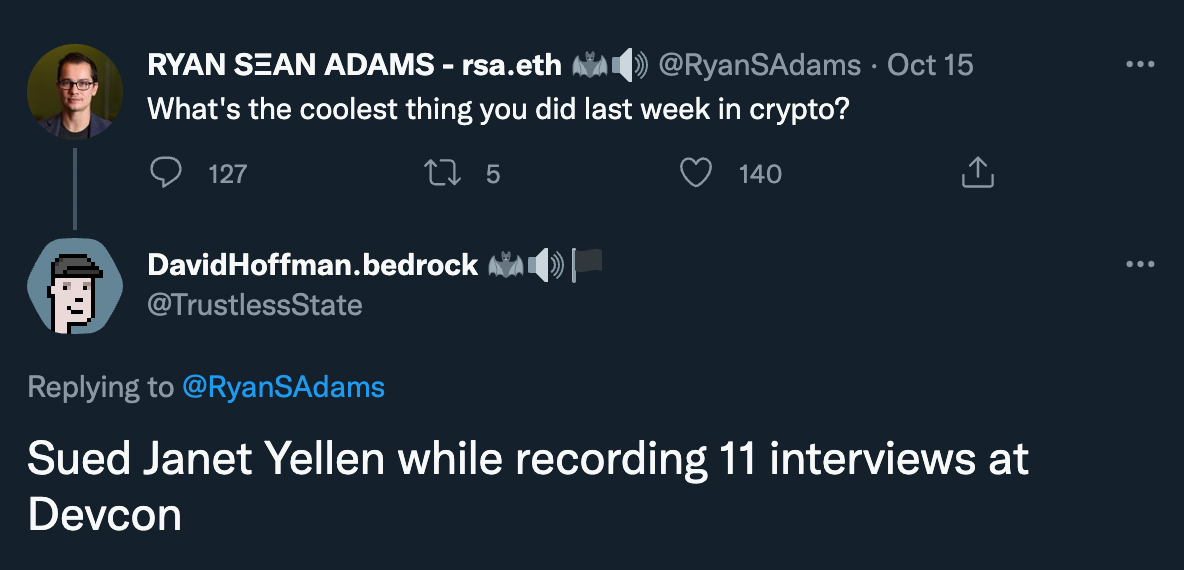What You Missed At Devcon

1. Devcon isn’t a Tech Conference
Devcon is short for ‘Developer Conference’, and it’s been the foundational Ethereum conference since Devcon 0 in 2014.
It’s a technical conference, while still being accessible to non-devs like me.
But to call Devcon a ‘tech conference’ misses so much of what makes Devcon a truly magical experience. If Devcon was merely a tech conference, then why are we in Bogota, Colombia, and not San Fran or NYC?
Devcon is a cultural conference as much as it is a developer conference. Equal parts tech and culture. And really, this is what Ethereum is at its core: software with the purpose of promoting culture.
This is why Devcon was in Bogota, Colombia, and not San Fransisco or NYC.
Devcon has always been hosted in non-conventional cities across the globe, because Ethereum is a global conversation of many cultures and diverse perspectives. The talks and panels at Devcon are all protocol-layer stuff, beneath the app-layer of Ethereum, and having these conversations in culturally diverse and rich parts of the world is an important element of keeping Ethereum credibly neutral and globally accessible.
If we were to only host Devcon in San Fransisco, then Ethereum would be make for San Fransiscans. But instead, Devcon is hosted in places like Prague, Osaka, and Bogota, in order to keep Ethereum in touch with the global community, and resonate with as many cultures as possible.
Ethereum is global and pluralist. With it, Devcon is an opportunity for culture to be included in the tech conversations that it hosts.
2. The L2 Wars are Awesome
The Monday before Devcon (which went from Tuesday-Friday) was ‘Rollup Day’, hosted by the Scroll team.
Every single L2 was present at Devcon, and since this conference is the most Ethereum-focused conference out there, everyone was shoulder-to-shoulder together.
All these L2s are working to the same end — to scale Ethereum and democratize access to secure L1 blockspace for the world.
Everyone is aligned in that mission! We’re all on the same team 🤗
But it’s also a war! It’s a race to get there first, and to do it better than the competition. So even though some think the ‘L2 Wars’ meme is too spicy, I think it’s awesome.
Ethereum L2s are like a family full of young siblings who all sit at the same dinner table, but also poke, jab, wrestle and fight with each other.

The organizers of Devcon even put all of the L2 booths in the same corner of the conference 😂
I’ve spent time with representatives before and after talks at various conferences, and it’s comical and heartwarming to hear them chat with each other about various parts of the L2 wars.
It’s a great balance between not taking the fight too seriously… while also totally taking everything very seriously.
One takeaway from Rollup Day: The crowd always got loud in support when anyone mentioned how rollups are incomplete and centralized in their current state. As a result, we need to make it a top priority to follow through on the values that we claim to believe in.
Every L2 has their work cut out for them, and the entire Ethereum community is holding them to accountability about plugging the gaps.
But also, while we’re all friends, working shoulder-to-shoulder, there’s still plenty of spiciness going around 🤫🌶
Rollup Day Takeaways.
📃 zkEVMs are the next big thing that lets Web3 projects plug into Ethereum’s established infrastructure and user base while scaling with the best possible technology: zk-rollups. It’s Ethereum on roids. And they’re almost here:
- Polygon zkEVM public testnet goes live!
- zkSync announces launch of Layer-3 testnet Pathfinder
- Scroll announces the upgraded version of their zkEVM testnet
📃 Optimism’s OP Stack is the next big thing.
Watch this talk from Karl Floresch. It’s hands-down the most entertaining and informative talk that happened at Devcon. Here’s the tl;dr:
- Optimism’s OP stack is the modularization of L2s. In the same way Ethereum is modularizing, Optimism is doing the same.
- This allows us to have repurposable constructions of L2s, instead of each L2 fork of Optimism (Boba, Metis) being a one-off implementation.
- If we all use the same repurposable code, we’ll stop having bugs and can share in each other’s contributions
- If it’s all under the OP stack standard, then Optimism turns from a monolithic L2, to a modular ‘Superchain’ where all OP forks combine into a single supermarket of L2s, where we eliminate all bridges, and re-enable L2 composability. 🤯
📃 Arbitrum acquires Prysmatic Labs
Off-Chain Labs, the creators of Arbitrum, acquired Prysmatic Labs, the creators of the Prysm L1 Ethereum client.
According to clientdiversity.org, Prysm is the leading client after Lighthouse.

This is a huge acquisition, and both parties are extremely happy about it. Arbitrum gets some top-tier talent, and Prysmatic Labs gets to fold into a well-resourced and streamlined company.
The big win for Ethereum: A core Ethereum client now has long-term sustainability solved, and this used to be a huge problem that plagued Ethereum. How do we fund our client teams for the long term? Prysm was previously relying on Ethereum foundation grants, but is now funded with a commercial entity that is market competitive. All members of the Prysm team can start receiving market-competitive compensation while helping to scale Ethereum.
Some people are concerned that this puts a part of Ethereum under the control of a commercial entity. It’s certainly a valid conversation, and something to keep an eye on.
I asked Vitalik this exact question in an on-site interview at Devcon; stay tuned for that interview coming out as soon as the Bankless Podcast editors can process it!
🎙️ Also, look out for the Bankless podcast livestream with the Arbitrum and Prysm teams on coming Wednesday!
3. People Like Games (ENS + POAPs)
You can tell how much people value something by how long they’re willing to stand in line for it (kind of like ETH gas fees).
So clearly, we found some product market fit in the ENS x POAP x IYK collaboration at Devcon.
The game: Anyone with a .ETH name could register to get an IYK badge with an RFID chip in it. People could go around and scan other people’s badges to claim a POAP for meeting that person.
Example: I would go to the ENS booth, and get my DavidHoffman.eth badge, which I proved that I owned by signing a message prior to visiting. I would then get a badge with a chip in it that would issue a POAP to anyone who scanned it, and I could even add my own NFT image to the POAP automatically.
How to win: Scan the most ENS cards.

Some people at Devcon only played this game. People were consumed by it. The leaderboard is viewable here, with Luc.Computer coming in at 473 POAPs collected.

Game designers, take note. Even kids were playing!!
This wasn’t the only game at Devcon!
On Thursday, I went to a party hosted by Mochi.Game. Upon entering, you were given a ring with a particular pattern on it. It was your job to find the three other people who had the same rings by the end of the night, and the winners would get a prize.
So naturally, I start running around the party trying to find my kin. This fun little game was meant to be a fun icebreaker to get you out of your social circles. I met Eric, from the Chainsafe team, and also Constantine, whom I only knew from Crypto Twitter.
Oh yeah, we also won (by finding each other first).
This had nothing to do with anything crypto-related, but the takeaway here is twofold:
- People like to play games
- Devcon is a place to mix, mingle, and collaborate with others!
4. Some More Things
Some closing remarks about Devcon.
- You wouldn’t have known it was a bear market. The vitality and vibrancy of everyone there was unmistakable. And on the other side of things, if we had been at the top of the bull market and ETH was $5,000, I’m not sure Devcon would have been any different. The vibe at Devcon was one of market-indifference.
- I’M TAKING A BREAK. From conferences, that is. And many others share the same sentiment. The conference circuit has been non-stop since ETH CC in July 2021. I’m sitting my butt down at my desk at home until ETH Denver 2023 next February. Ethereum is embarking upon a golden age of building, and almost all corners of Ethereum have their work cut out for them. And that includes Bankless ;) Stay tuned.
- Ethereum’s best critic is itself. From L2’s needing to plug their centralized holes, to the protocol layer having unacceptable levels of censorship, the Ethereum community continues to hold itself to the highest possible standard. The levels of constructive self-criticism of the current state of Ethereum are high, and everyone has an appetite to attack these problems head on. It’s a very refreshing vibe, compared to the level of willful blindness we saw from the broad crypto community at the peak of the 2021 bull market.
If you didn’t attend Devcon, I hope today’s release of Bankless helped make you feel like you were there!
But if this wasn’t enough, I also have a ton of interviews I’ve brought back with me. These interviews include:
- Vitalik
- Justin Drake
- Preston Van Loon (Prysmatic)
- Aya Miyaguchi (Director of EF)
- Dankrad (Danksharding)
- Bartek (L2 Beat)
And so many more! They’re coming on the YouTube as fast as we can edit them!

- David Hoffman
📺 Some Must Watch Devcon Talks
MEV and censorship
Phil Daian, steward of Flashbots announced their latest project open sourced project SUAVE — short for Single Unifying Auction for Value Expression — to combat Ethereum’s MEV centralization.
Unlike Flashbots that tries to create a transparent free market for MEV, Anna George of CowSwap shows us how they’re taking a different approach by reducing MEV via 1-block, 1-batch auctions.
Eric Wall on the case for social slashing in Ethereum’s war against censorship.
I moderated a panel with Vitalik Buterin, Julien from Argent, Matt from Geth, and Yoav from the EF about Account Abstraction.
Fabio Hildebrand of Reflexer Finance shows us why RAI is the one true, decentralized stablecoin.
Brandon Ramirez, co-founder of The Graph, on why the Ethereum vision of maximal decentralization will first require decentralization of the blockchain data supply chain.
Paul Brody explains how enterprise blockchain solutions like Polygon Nightfall is scaling the new era of blockchain privacy. (See Brody’s previous article for Bankless)
Liquid Staking
Both Darren Langley of Rocketpool, and Vasiliy Shapovalov, co-founder of Lido gives us the lowdown on everything liquid staking.
Everything else Web3
Should games be built on the blockchain at all? Gubsheep of the Ethereum foundation and creator of Dark Forest gives us three reasons:
- Games are a technically demanding yet low-stakes environment. They allow us to build infrastructure without risking massive amounts of financial capital.
- Games are a leading social indicator in technology. How players interact with new affordances in games gives us insight into how users will interact with future digital systems.
- Games are inherently playful. A thriving indie game community can help “bridge the gap” between technologists and creatives, artists, writers and thinkers - introducing greater intellectual diversity to the ecosystem.
Stanis Kulechov of Lens protocol tells us how Lens is reimagining “social media” as one, unified composable social graph protocol that privileges user experience over acquisition.
The biggest Web3 opportunity is quadratic funding for public goods. Griff Green tells us the story.
DAOs need better social coordination. Chandler De Kock of Astaria shows us the way.
Last but not least, Ethereum foundation researcher Justin Drake takes the stage on why ETH is Ultra Sound Money 🦇🔊
Action steps
- 📺 Watch the rest of the Devcon talks!